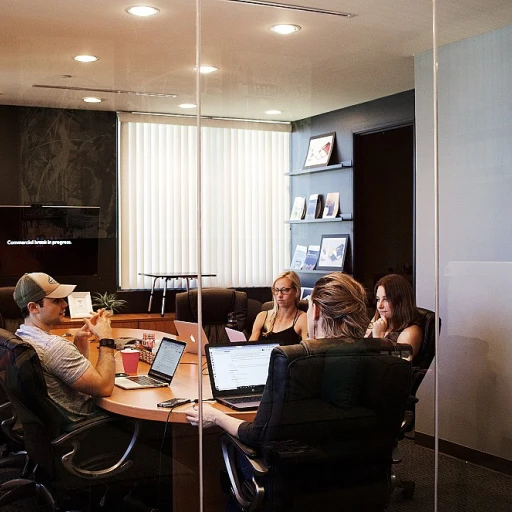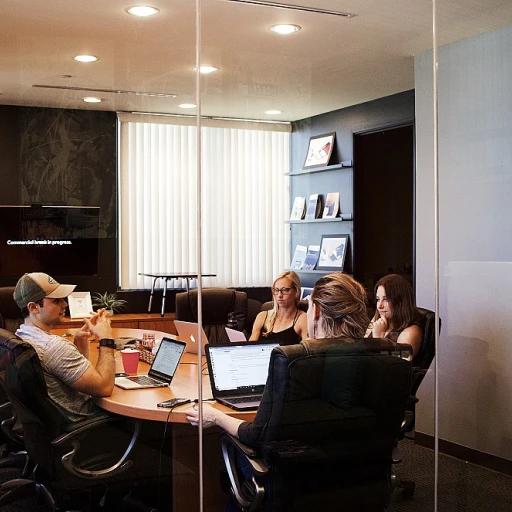
Understanding the Benefits of Three-Month Calendars
Unlocking the Potential of Periodic Planning
Using a three-month calendar in UK offices can significantly bolster productivity and clarity in planning. By offering a comprehensive month view, these calendars allow for effective time management and offer a broader glance of upcoming responsibilities. When visually presented on a large wall calendar, employees can easily view calendars spanning several months, aiding in extended project planning and task allocation.
The value of a three-month calendar lies in its ability to present a harmonious balance between short-term month-to-month objectives and long-term planning strategies. By spanning a full quarter, they provide a seamless transition through the calendar month and help identify overlapping deadlines or potential scheduling conflicts early on.
Businesses across the UK have recognized the benefit of integrating executive calendars that offer a three-month span, minimizing the need for constant updates and adjustments. This efficiency ensures that employees stay on track, thereby maintaining low error rates in task management. Moreover, the practice of utilizing three-month calendars can be a substantial cost-saving measure, as it minimizes the need for various separate items like monthly planner boards and additional printing costs.
For those interested in implementing this efficient solution, assessing how businesses maximize efficiency with these calendars can provide further insights and practical guidance. These calendars not only aid in planning efficiency but also enhance communication and collaboration within the team.
Implementing Three-Month Calendars in UK Offices
Efficient Office Setup with Three-Month Calendars
Implementing a three-month calendar system in UK offices can be a game-changer for administrative efficiency. Deciding on a calendar large enough for easy viewing yet compact enough to avoid clutter is essential. These calendars offer a panoramic view of upcoming months, allowing your team to plan projects and deadlines more effectively. Choosing the Right Format When selecting a calendar, consider how it will integrate into your office setup. A wall calendar or a desk-size calendar month format can provide the flexibility needed for various departments. The month wall and month view options are ideal for managers who need to oversee a span of months, giving them the ability to anticipate and react quickly to upcoming deadlines and events. Customization for Varied Needs Customizing your calendars to fit specific office needs increases relevancy and staff engagement. Options such as dry erase variants are popular for their reusability. Minimum quantity orders often apply, but bulk purchasing can reduce the overall cost per item. Whether opting for a jan dec annual wall calendar or a rolling three-month wall calendar, consider how each layout benefits your team’s workflow. Additionally, ensure the calendar aligns with your financial constraints, examining both the initial price and potential delivery fees. For further insights on optimizing three-month vertical calendars during specific periods, such as a focused July to September stretch, check the detailed guide on maximising efficiency with a three-month vertical calendar. Balancing Digital and Physical Options The debate between digital vs. physical calendars often arises. While digital calendars offer real-time updates and reminders, physical calendars provide a full view which some offices find invaluable for at-a-glance referencing. An executive calendar can be an excellent compromise, offering the supremacy of digital scheduling with the tangibility of a wall calendar. Ultimately, implementing a three-month calendar can revolutionize how your office functions. Its ability to provide a strategic month calendar outlook promotes time-efficient planning and enhances overall productivity.Customizing Calendars for Office Needs
Tailoring Calendars to Meet Office Specific Requirements
Creating customized solutions for office calendars can significantly boost productivity. Office managers should consider the unique needs of their teams when designing or selecting a three-month calendar. Tailoring a calendar means paying attention to various factors:- Calendar Format: The decision between a wall calendar and a desk calendar depends on the available space and the volume of information to be displayed. A wall calendar offers a large month view for easy access, while a desk calendar could provide quick reference at individual workstations.
- Size & View: Offices with numerous team members may benefit from a calendar large enough to be visible at a glance by everyone. Products that allow a full calendar view of the month are often preferred for team coordination.
- Digital Features: Consider implementing dry erase features for flexibility in scheduling changes without consuming additional resources. A digital solution can also be evaluated based on its ease of integration with other office systems.
- Sector-Specific Needs: Different departments within your organization might require calendars with custom entries such as project deadlines or industry-specific compliance dates organized by month spans. Ensuring each calendar month contains relevant annotations enhances utility.
- Duration and Longevity: A full year calendar may not suit every office, while an executive calendar showcasing three months in advance allows for effective forward planning. Selecting the right time span prevents clutter and ensures relevance.
- Cost Considerations: Keep an eye on the price-value ratio. Evaluate products not only for their upfront costs but also for the benefits they generate over time, such as reduction in meeting times or enhancement in workflow continuity.
Digital vs. Physical Calendars: Making the Right Choice
Weighing the Options: Digital or Physical Calendars?
Choosing between digital and physical three-month calendars is crucial for maximizing office efficiency. Each format has unique advantages and can be strategically selected based on an office's operational needs. Digital calendars offer a versatile and quick-access option, suitable for teams accustomed to working in tech-savvy environments. They allow seamless integration with other digital tools, enabling real-time updates that are essential for fast-paced offices. The ability to share calendars across platforms ensures that team members are always informed, reducing the risk of miscommunication. On the other hand, physical wall calendars, especially those in a large calendar size, provide an at-a-glance view that is unmatched for those who appreciate the tactile interaction and visual clarity. A large wall calendar displaying three months at once can visually unify a team's focus, fostering a concrete sense of shared objectives and timelines. Their presence in office spaces serves as a constant, undeniable reminder of upcoming deadlines. Considering budget aspects, the price point of physical calendars might vary, but they can be a more cost-effective solution in the long run, given the one-time purchase nature. However, digital calendars might have subscription costs associated with premium features, making it essential to evaluate the most budget-friendly option for your office. Ultimately, the mode of calendar chosen should align with the office culture and workflow. If your team is keen on digital accessibility or if there's a preference for keeping things low-tech yet visually impactful, the decision should reflect these preferences. Additionally, examining case studies from UK companies, who have made successful transitions to either calendar type, can offer further insights into what might work best in your environment.Case Studies: Success Stories from UK Companies
Real-Life Applications and Achievements
In numerous UK companies, the transition to three-month calendars has been a game changer. Here's how a few have maximized efficiency using this tool:- Enhanced Visibility: By adopting a system that provides a large, at-a-glance view, firms have significantly improved their planning capabilities. Displaying a calendar span of three months allows teams to anticipate deadlines and allocate resources effectively.
- Cost-Effectiveness: Many organizations appreciate the low price point of standard large-size wall calendars, making them an accessible option for any budget. Given the option for bulk purchasing, companies often manage to meet their minimum quantity needs profitably.
- Goal Alignment: Deploying year calendars has streamlined communications across departments. The executive calendars are particularly favored, especially with their custom month views that cater to annual strategy meetings, often spanning from Jan to Dec.
- Enhanced Collaboration: Items such as dry erase wall calendars have been used to label and adjust plans fluidly, maintaining the freshness of wall calendar data and enabling quick modifications without needing a full delivery of updated materials.
Tips for Maintaining Calendar Accuracy and Relevance
Ensuring Your Calendar Meets Today's Demands
Maintaining your three-month calendars' accuracy and relevance is crucial for efficient office management. By proactively addressing common challenges, you can ensure your office's scheduling tool remains effective throughout the year.- Regular Updates: Make it a habit to update your calendar monthly. Routine updates help prevent any scheduling conflicts and ensure that all events within the span are accurately reflected. Whether it is a small meeting or a major event, maintaining current information is key.
- Accurate Information: Always verify the data entered into digital or physical wall calendars. Incorrect details, like a meeting pushed to the wrong month, can lead to significant disruptions.
- Digital Integration: For those using digital calendars, syncing your devices can prevent discrepancies. Applications that offer real-time updates can ensure your calendar view is always accurate from any location.
- Visibility and Access: Large wall calendars work well for office spaces, providing a at-a-glance view for staff members. However, ensure it's displayed in a central location for all to see.
- Customization for Specific Needs: Align your calendar’s details with your office's specific needs and practices. This includes catering to international holidays or specific business cycles that may affect the jan-dec schedule.
- Feedback Mechanism: Encourage employees to report any discrepancies they notice. Collaborative effort will ensure the calendar remains a reliable tool.
- Reevaluation and Retrofitting: Annually evaluate the effectiveness of your wall calendar against digital alternatives. Determine if the product truly supports your office's productivity goals and offers the largest size at a low price with convenient delivery options.













